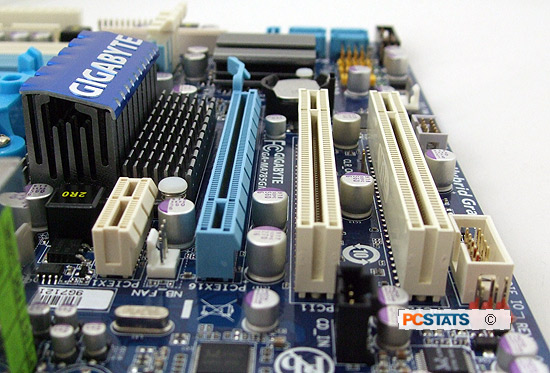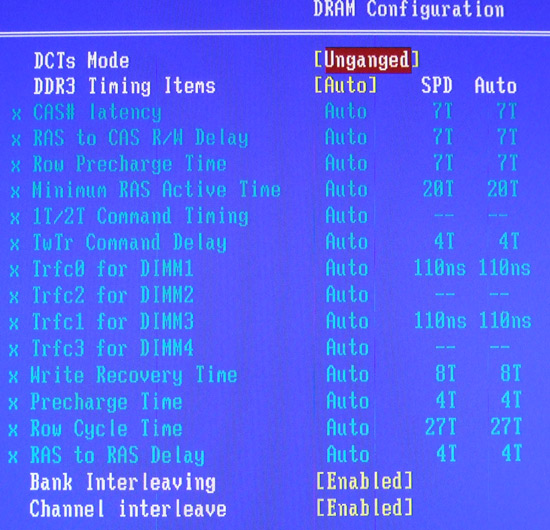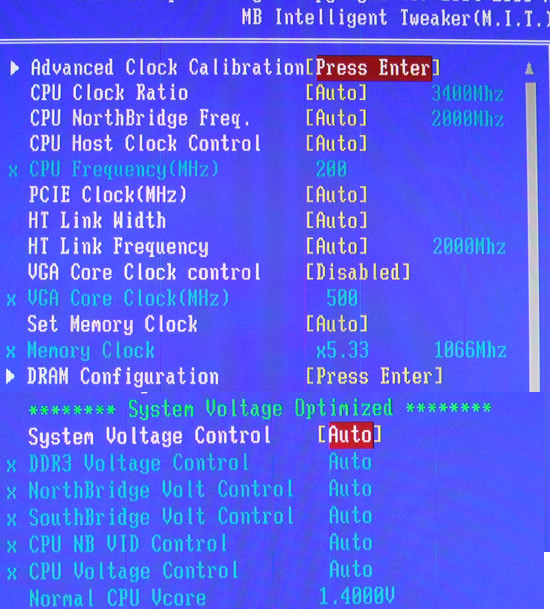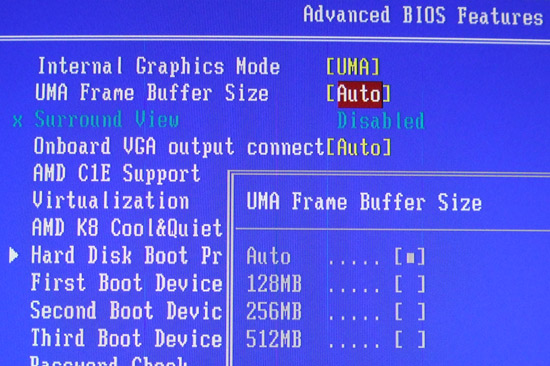 |
| Overclocking Results: |
|
|
PCSTATS began this overclocking
adventure with the Gigabyte GA-MA785GMT-UD2H motherboard by dropping the
multiplier on the AMD Phenom II x4 955 Black Edition CPU to 8x, disabling
features like Cool'n'quiet and AMD load balancing. Next the base clock was set
to 200MHz, and the Corsair 1600MHz DDR3 memory configured to run in 800MHz mode.
A standard air cooled AVC Z7U7414001 heatsink was used (see Frostytech's review of it here).
The
Gigabyte GA-MA785GMT-UD2H easily managed a straight jump from 200MHz up to
240MHz, and another bit of tweaking took it up to 250MHz bus speed. After that
the system required a small 0.1V boost to its memory voltage in order to keep
overclocking onward, allowing it to achieve a final overclock of 270MHz. Not bad, but not fantastic.
After
finishing with the CPU, PCSTATS turned its attention to the Radeon HD 4200 IGP.
AMD IGPs tend to be very good overclockers, so we had high hopes when
approaching the new AMD 785G chipset.
Through simple adjustments of the core clock speed, it
was possible to take the Radeon HD 4200 IGP from its 500MHz default clock speed
to an initial overclock of 600MHz. Confident that the IGP could handle a lot
more, we quickly sped through 700MHz and made an attempt at 800MHz... No dice.
Random screen freezes and graphical corruption made it clear the Radeon HD 4200
wasn't as ambitious as our overclocking attempts. In the end PCSTATS settled on
a maximum IGP overclock of 750MHz.
Once the Radeon HD 4200 IGP was overclocked, it was only
natural to do some quick benchmarking to see what kind of performance gains we'd
actually achieved.

(install a PCI Express
x16 videocard for 3D gaming)
3Dmark 06 with the IGP overclocked Gigabyte
GA-MA785GMT-UD2H returned a score of 2077
3DMarks. Compare this to the Asus M4A785TD-V EVO (which also had a
750MHz IGP overclock), and scored 2308
3DMarks. The difference in scores is due to the 128MB of DDR3 1333MHz
Sideport memory, which increases performance in 3D loaded benchmarks like this.
The default score for the Gigabyte GA-MA785GMT-UD2H is 1043 3DMarks. The benefit
is there, but the result is like turning lead into lead.
Inside the BIOS - OC and
Memory Tuning Options
Gigabyte's GA-MA785GMT-UD2H motherboard offers up a lot
of BIOS options for system tuning. The major features of the AMD 785G chipset,
including IGP and Sideport memory overclocking are all covered with enough
detail to keep the weekend overclocker occupied for long time.

The main
DRAM configuration screen shows all of the important memory settings, which can
be used to adjust performance memory to its optimal settings.

Gigabyte's MB Intelligent Tweaker (MIT), is the primary
overclocking menu in the BIOS, and controls the CPU clock, northbridge, as well
as the clock speed of the Radeon HD 4200 IGP.


It's
possible to increase the amount of memory the Radeon HD 4200 IGP uses as well in
the Advanced BIOS features page, which will use up more system memory, but also
increase video performance at higher resolutions.
Next up, test system specs and benchmarks! Will the IGP
hold it's own in tests like Sysmark and 3DMark Vantage? The answer to that
question is yes, and no. Read on to see where the Gigabyte GA-MA785GMT-UD2H
excels and where a little more (graphical) power could be helpful.
